Peter Edward Glaser -Taking Buxton College to the Moon by David Roberts
In my research into Buxton College, I have now turned up another former Jewish refugee schoolboy who attended Buxton College in the late 1930s and early 1940s and who went onto do great things in the United States.
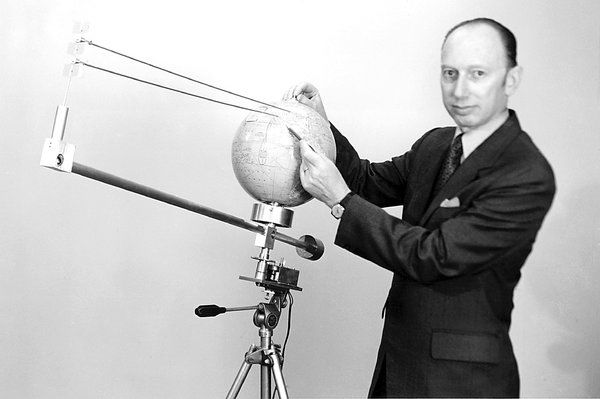
Peter Edward Glaser
Peter Edward Glaser did not actually go the Moon, but he was a project manager for NASA – getting a large scientific device on to the surface of the Moon, getting it to work and by all accounts it still working today. I am sure he had a large team behind him, but without the project management skills behind them. It might never have happened. Peter also had the misfortune to be exiled from his homeland twice.
From the previous articles, you remember how the benevolent Headmaster of Buxton College, Mr. Arthur Mason allowed many Jewish refugee boys from Germany to board at Buxton College and how many went on to distinguished service for the United Kingdom and the United States. Previously I looked at Hans Tannhauser, brilliant scholar and Harvard Art Historian who was killed flying for the US Army Air Force. We also looked at Hans Heymann Jr, John Clive and Ernest Kristeller who went in to serve the post-war United States in academia and Government Service.
I was researching an article about the banks of Buxton online, when I accidently stumbled on another “old boy” who emigrated to the USA. The other boys were from Germany, mainly from Berlin. Peter Edward Glaser was from pre-war Czechoslovakia and was half German and half Czech. He was also Jewish. It was incredibly fortunate that Peter recorded a series of interviews with John Elder of the America Institute of Physics, and his story can be put together from those recordings and the transcripts of these.
As mentioned above. Peter was project manager for the Apollo 11 Lunar Ranging Retroreflector Array installed on the lunar surface of July 20, 1969, and two other arrays installed on subsequent missions — the only science experiments still in operation on the Moon. And if we solve our energy problems down here on planet earth, Peter might have made a valuable contribution to that too. In 1968 he presented the concept for, and in 1973 was granted the US patent on the Solar Power Satellite to supply power from space for use on the Earth. It all sounds a bit familiar and fanciful, in fact the plot of the James Bond Film , “The Man with the Golden Gun” hinged on a similar device for transmitting Solar Power to Earth, “The Solex” . Currently Space Based Solar Power (SBSP) is being actively pursued by Japan, China, India, the United Kingdom, and the United States. In 2008, Japan passed a “Basic Space Law” which established space solar power as a national goal, so Peter’s idea is still ongoing. If it ever comes off and solves some of the planet’s energy problems, then a former Buxton College boy might have made a small contribution to the project along the way If you are looking up at the near side of the Moon. The Apollo 11 Lunar Ranging Retroreflector Array is still there, look in the direction of A11 on the photo below. (A13 and A15 are from subsequent Apollo missions). So you can look up at the moon over Buxton (if the cloud ever breaks for long enough) and think that a Jewish Czech-German refugee who went to Buxton College helped to put something up there and that even if it stops working, it is basically there up there forever.
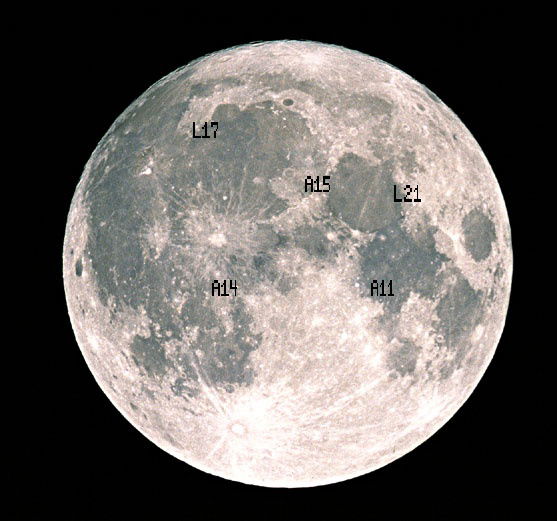
By NASA - http://science.nasa.gov/science-news/science-at-nasa/2004/06may_lunarranging/, Public Domain, https://commons.wikimedia.org/w/index.php?curid=19603478
Before we get to side-tracked into talking about Lunar Exploration, , here is the extraordinary story of Peter Edward Glaser
Peter Edward Glaser (September 5, 1923 – May 29, 2014)
Peter was born in 1923 in Žatec, (Saaz) a town about 2 hours west of Prague, on the border of the Czech and German speaking areas, Bohemia and the Sudetenland. His mother was from the Czech part, his father was from Žatec and so from his earliest years Peter was bought up as bilingual. His father Hugo was partner with his uncle in a factory in Žatec , which produced wire ropes for heavy industry, primarily the wire ropes used for the elevators in the deep lignite mines of Bohemia, they were also used in Michelin Tyres, and for the flat wire ropes used for fire ladders which allowed them to extend to greater heights. Some of the wire that the Glaser family used in their production came from Scotland. The factory also delivered wire ropes to Bata, then the world's largest shoe factory.
Žatec dated back to about the 13th century. According to Peter" The town was entered through a big tower where you went through. To this day you have to go through that portico", The area was renowned for its hops which were the primary cash crop of that region, and were known as the world's best hops, they are still known as “Green Gold”.
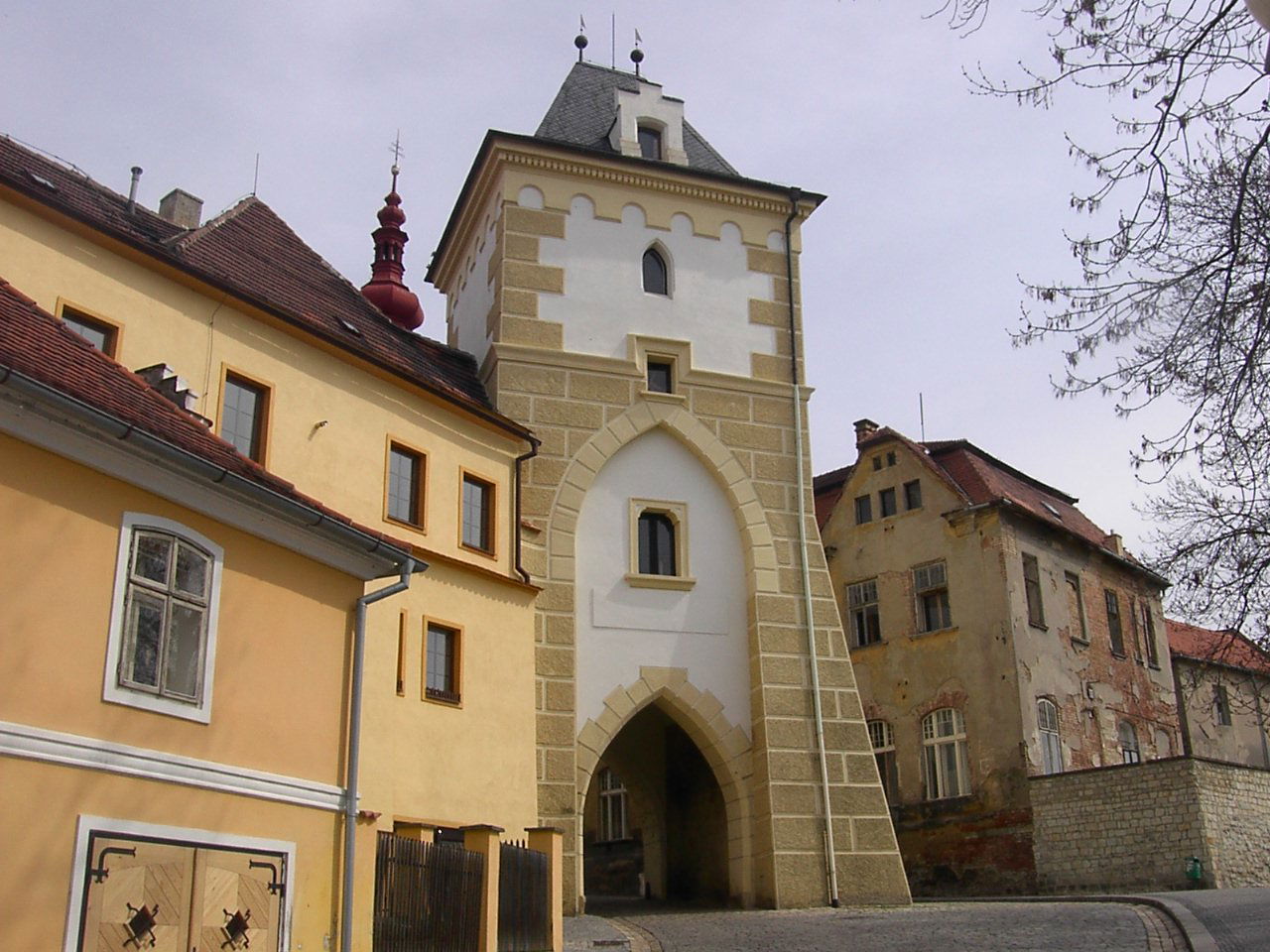
The city gates of Zatec
By cs:User:Ondrej.konicek - cs:Soubor:PICT2989.JPG. Upload to cs: wiki by cs:User:Ondrej.konicek), December 2006 (filename changed, upload to Commons by User:Miaow Miaow), CC BY-SA 3.0, https://commons.wikimedia.org/w/index.php?curid=1453644
Czechoslovakia was founded as a country in 1919 and was probably the most western of the middle European countries. Vienna is further east than Prague, so the Czechs were always very close to the western Europeans. Bohemia had previously been part of the Austro-Hungarian Empire many including Peter’s father, who felt there had been some advantage in being part of that Cosmopolitan entity. It was possibly this that gave the Czechs the ability to get along, "You get along to live, and if you wait long enough, then the Hapsburg disappears, the Nazis disappear, the Communists disappear, and the Czechs are still there." He might also have added “ .. and the British let you down!” Due to its location somebody always had an interest in taking parts of it. Both the Germans and the Poles occupied part of Czechoslovakia after Hitler's opened that particular floodgate. Possibly the only other constant, was that the British would let them down again, again and again. 1938, 1948 and 1968. In his interviews Peter said he felt very much part of Mittel Europa. To him
“America was the same distance as a moon and as unreal. To walk in America, I could have said, ‘I'll walk on the moon,’ “
He might not have walked on the moon, but in the end, he got something up there. Before 1938, Czechoslovakia was a very advanced civilization, Einstein taught at Prague, it was a hotbed for a lot of the intellectuals for centuries. There was a lot of history, a lot of thinking about things differently. The country therefore was quite different from Eastern Europe. In fact, the Czechs never considered themselves to be eastern Europeans but still had friendly relations with the other Slavic countries, although they always expected to be independent of them. It was, of course, thanks to the Treaty of Versailles that the Czechs ended up with a sizeable German minority, which is what led to a lot of the trouble in the first place.
Žatec was a pleasant place to grow up. The population of the town was about 80 percent Sudeten Germans, and there was no friction between Sudeten Germans and Czechs at the time. There was a Czech school and a German school, and Peter’s parents sent him to the German school and were going to send him to a Czech high school later. His youth was carefree. he was an only child and grew up in a Jewish community of 2000 people in a town with a population of about 25,000. His father's factory was one of the largest enterprises in town. Peter was not a great scholar, but he passed all his courses, he had many good friends, female cousins who were like sisters to him and never had any problems in being brought up as an only child. It was by his account a very serene, upper middle-class existence. The family had a chauffeur, and a Tatra car which was way ahead of its time. Only under very extenuating circumstances did his parents allow him to be driven to school. Most of the time he walked, even in bad weather and snow. There were very few class distinctions between the boys from very poor background, working class, and it was a very democratic society. The boys were football mad, and all played together.
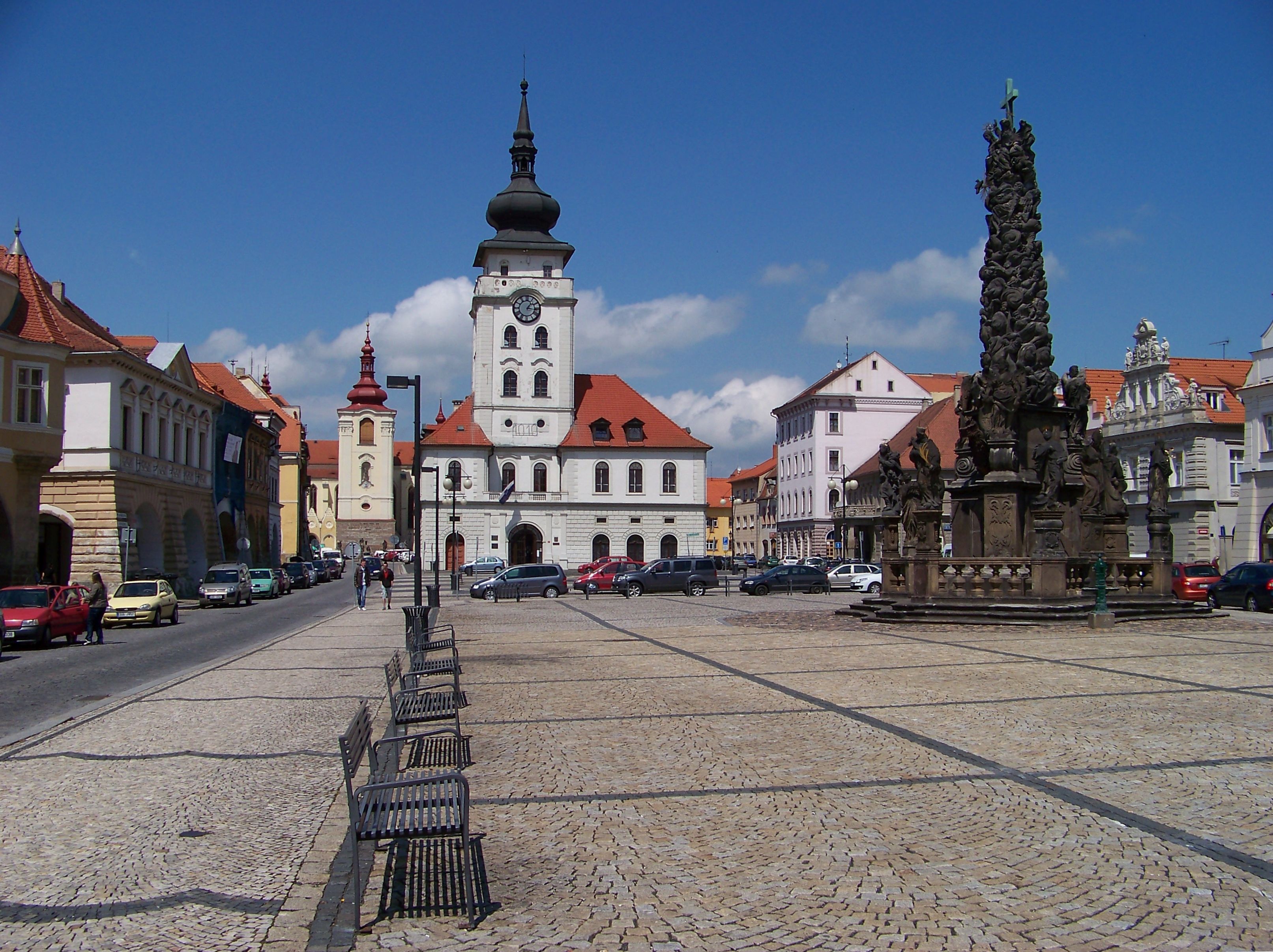
The main square in Zatec
ŠJů, Wikimedia Commons, CC BY 4.0 <https://creativecommons.org/licenses/by/4.0>, via Wikimedia Commons
Under the Austro- Hungarian Empire everyone had access to basic health and Czechoslovaks took over that system and improved on it. There was a local public hospital, and those with money could pay for a private room and the poor did not have any problems with health care. even during the depression, they managed to get by.
Peter recalled that probably until 1935 or 1936 he was totally unaware that the Nazis had any ill intentions. About that time that the leader of the Sudeten Germans, Heinlein, started to organize the Germans and make them aware they should become part of the large German empire. In May 1931, Henlein was elected president of the Turnerbund, which increased his profile in the Sudeten community. The supposedly apolitical Turnerbund become more overtly völkisch and militaristic. In July 1933, Henlein staged a festival Žatec, where before 50,000 guests, some 20,000 Turnerbund members performed a carefully choreographed display , as they all marched together while Henlein in his speech proclaimed the Turnerbund was now the "educational body of the Sudeten Germans" On 1 October 1933, Henlein founded the Sudetendeutsche Heimatfront ("Sudeten German Home Front", SHF). Although the SHF was originally meant as a successor organization of the banned anti-Czech German National Socialist Workers' Party and German National Party, it soon became a broad right-wing movement in order to achieve a status of autonomy for the German minority, Henlein's association with the catholic Kameradschaftsbund allowed him to argue to the Czechoslovak authorities that his movement was not a continuation of the banned parties. As early as 15 May 1934, the Czechoslovak Foreign Minister Edvard Beneš in a note to President Tomáš Garrigue Masaryk accused the Heim front of being financially supported by Berlin. To avoid having his party banned by a Czechoslovak government that clearly disliked his movement, Henlein always praised democracy in his speeches, but there was always a pronounced völkisch tone in his writings and speeches.
The major theme of Henlein's speeches was always for the need for "unity" in the Sudeten German community to allow the Sudetenlanders to present themselves as "one body" that would be able to talk to the Czechs Volk to Volk and thus "right" the ""injustice of 1918".[ The particular "righting" of the "injustice of 1918" that Henlein wanted was to give the Sudetenland autonomy in Czechoslovakia, and once that autonomy was achieved, organize it on Catholic corporatist lines. Henlein spoke often of creating the volksgemeinschaft ("people's community") that would make the Sudeten German community into one. The ambiguity in Henlein's speeches about whether volksgemeinschaft he wanted was to be organized along Catholic or völkisch lines or perhaps both reflected his need to appeal to two types of voters in the Sudetenland. At the same time, Henlein spoke of the Sudeten Germans living in a Central European "common space" with an identity that transcended loyalty to Czechoslovakia. In October 1934 he spoke of a coming "reconciliation" between the Germans and Czechs, saying that relations between the two peoples would soon return to where they had been in the "golden days" of the Holy Roman Emperor Charles IV ". Despite his claims to be loyal to Czechoslovakia and its mosaic of peoples, Henlein always portrayed life over the border in Germany as far superior to Czechoslovakia, and he encouraged his followers to boycott businesses owned by Czechs and Jews.
In July 1935, Henlein first met the British spy, RAF Group-Captain Graham Christie, who was to be his main conduit with the British for the next three years. Starting in January 1937, the British government made a major push for the Czechoslovak president Edvard Beneš to negotiate with Henlein, but Beneš refused, saying he believed that Czechoslovakia's future was a bright one. The French supported Beneš, saying that any concession to Henlein would weaken Czechoslovakia, and thus the entire French alliance system in Eastern Europe. As France was Czechoslovakia's most powerful ally, Beneš felt no need to give in to the British pressure in 1937 for talks with Henlein about the devolving power from the (Prague) Castle.
Meanwhile for Peter, Sudeten German friends slowly began to distance themselves. Peter belonged to "Turnverein," a gym club, a lot of Germans were there, and slowly it became clear that really, he wasn't part of the "club," so to speak. It was like what happened to the Jewish German boys in Berlin, a gradual estrangement from former friends before legal discrimination arrived. Peter was strongly influenced by his father’s factory. The family lived nearly next door and he was able to walk there. Every worker knew him, and although as a boy he was not allowed to speak, he could watch. So, he became very interested in the factory and technical things until he couldn't imagine being anything else but an engineer. The factory prospered. The family home was close to the factory which meant that his father didn't get that much exercise, so they had a new house built which at reasonable distance walking distance. The new house, completed in 1937, and designed by an architect was in a lovely location with panoramic views. The family moved in 1937, and then their world essentially collapsed.
In his interview Peter specifically mentioned that “September 1938 was when Lord Runciman essentially gave away the Sudetenland to the Nazis.” Runciman had been sent on a mission to Czechoslovakia at the beginning of August 1938, by the Prime Minister, Neville Chamberlain, to mediate in a dispute between the Government of Czechoslovakia and the Sudeten German Party (SdP). Unknown to him, the SdP, although ostensibly calling for autonomy for the Sudetenland, had instructions from Nazi Germany not to reach any agreement on the matter, and thus attempts at mediation failed. With international tension rising in Central and Eastern Europe, Runciman was recalled to London on 16 September 1938.The published outcome of the mission - known as the Runciman Report - was issued on 21 September 1938 in the form of letters addressed to Neville Chamberlain and Edvard Beneš,. The report held the SdP responsible for breaking off the negotiations with the Czechoslovak government despite the fact that revised government proposals met "almost all the requirements" of the SdP. Runciman considered the actions of the Czechoslovak authorities to be "not actively oppressive, and certainly not 'terroristic'" but "marked by tactlessness, lack of understanding, petty intolerance and discrimination". The multiple complaints of economic and political discrimination voiced by the Sudeten Germans were, he believed, "in the main justified" and gave rise to a feeling of "hopelessness" – but "the rise of Nazi Germany gave them new hope". Runciman, therefore, considered "their turning for help towards their kinsmen and their eventual desire to join the Reich as a natural development in the circumstances". This led him to conclude "that these frontier districts should at once be transferred from Czechoslovakia to Germany". Neville Chamberlain agreed to the transfer of the border regions of Czechoslovakia to Nazi Germany at the Munich Conference on 30 September 1938.
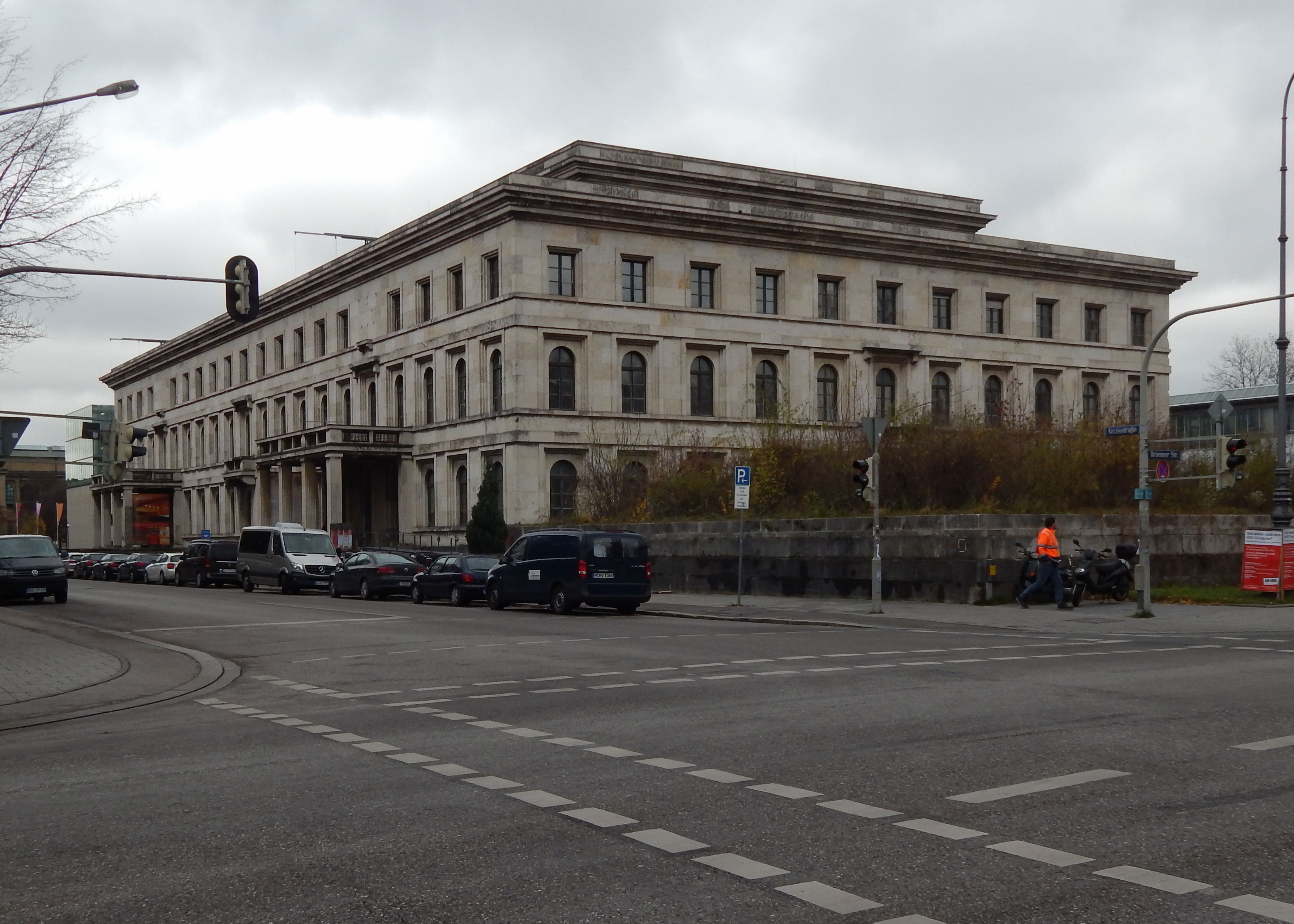
The site of the Munich Conference
After Munich, Peter’s father realized the family had to leave Žatec, which they did in September 1938. Prior to that Peter had started at Czech school, high school, which had been the plan all along, in a town near Prague, and lived with a family there. that time the Czechoslovak government requested his father to have the factory machinery transferred to Prague and arranged for a special train to do so. That was in defiance of a Nazi policy that anyone who transported goods or manufacturing equipment, from the Sudetenland would be jailed or worse. They moved to the safer Prague and were told the moving van had burned on the way there and all their personal belongings had been lost. it wasn't until 1945 when Peter returned that he found the “burned belongings” , in various homes- obviously it had been expropriated rather than burned or forwarded. The family was living in Prague, when the Nazis marched in on March 15th, 1939, Peter remembered standing on one of the main roads in Prague in a blizzard, watching the German trucks, cars and motorcycles, entering the city. His father realized that there was only one thing to do, and he immediately left. He had followed the Czechoslovak request in moving his factory and he knew that he would be jailed as soon as the Germans found out who he was. The family had to get permission, to leave, which they did by saying they were going on holiday to Italy and were able to after two days standing in line day and night, to get an exit visa. Italy at that time required no visa, and they arrived at the train station with one suitcase, nothing much, and boarded the train: they were lucky , possibly the Nazis were not organized well enough at the time to be looking for them. It was the end of an era; the end of Czechoslovakia as they knew it. They were the only members of a large family — aunts, uncles, etc. — who managed to leave. Most relatives felt, "Well you're crazy. Why are you leaving?" They could understand why, Peter’s father was leaving but for themselves nobody had any inkling. They probably hadn't read Mein Kampf. His grandparents stayed behind, thinking “old people. Who would do something to old people? “
The family stayed in Venice from April until July. Peter’s father got in touch with his counterpart, John Brunton of Brunton Wire Works Musselborough, Scotland, a very large wire producing company to try and ease passage to the UK. Apart from some sightseeing, the family spent their time in Venice trying to get out of Italy. While in Prague, Peter’s parents had taken the sensible step of sending him to the English school to learn the language, so by the time they got to Venice he actually spoke rudimentary English, could read it, and his mother studied with him. Apart from studying they looked at various ways to get to France, in case they were not allowed into England. They travelled to San Remo on the other side of Italy. There you could hire a boat which would take you illegally to the South of France. The family were in San Remo when the British consul in arrived and told them they had a visa to go to England. At Genoa, they took passage on the MV Dunbar Castle of the Union Castle Line which was on the last leg of its voyage from Cape Town to London, Peter remembered the band was playing, and they had a very nice voyage, apart from getting seasick in the Bay of Biscay-. The family arrived in England on 18 August 1939 the weeks before the war started and ended up living on Castellain Road in Maida Vale.
In England Peter’s parents sent him to Buxton College at the start of the school year in 1939 as a boarder. He had a terrific time and loved the school. He recalled that the teachers were excellent, especially a really a fabulous English teacher. Year later Peter could still quote from The Tempest.
“Our revels now are ended. These our actors,
As I foretold you, were all spirits and
Are melted into air, into thin air: “
He became a prefect and learned to play cricket. In one of his interviews, he recalled that they were taken swimming in the Thermal baths of Buxton (inaccurately described as radioactive), his point was that in the Sudetenland, they were forced to wear bathing caps in the swimming pool in Buxton they were not. Peter also recalled how at Buxton he was exposed to the world. As a state-run boarding school. Buxton College catered for the children of colonial officials and businessmen. As Peter puts it
“They came from all over, all their fathers, their parents were very well-placed in colonial places, wherever they came from, and I realized that there was a helluva big world out there. And I think that was very interesting — You know, they talked about where they came from and what the customs were. So, the public schools in England gave people who attended there a totally different view, because you didn’t read about it “
While he was there, there were boys from Mexico and Brazil whose fathers were working there and the sons of colonial Administrators and soldiers in the British Empire.
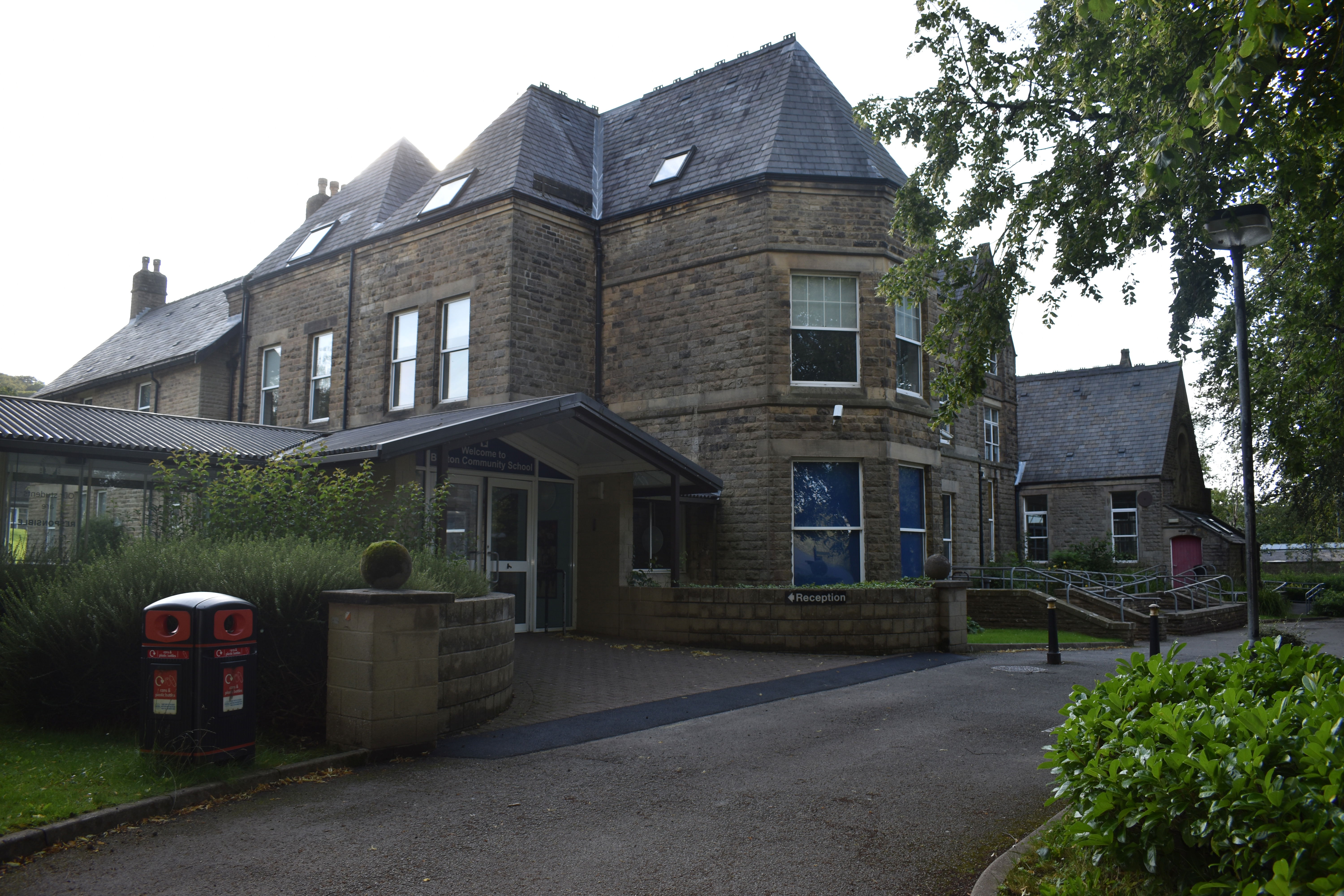
Buxton College
At that time, Peter had reddish hair and freckles, so they people thought he was Irish until they spoke to him. Visiting his parents in London, he remembered the bombing and sleeping in Piccadilly Circus” there were these iron bed things in the underground, and that's where you went at night, and you could leave your stuff there, and when you came in the evening it still was there. After leaving school Peter did war work in Britain, he went to the YMCA and was trained in farming; how to milk cows and plough with horses, and then sent to farms to work. The YMCA assigned them to various places, and Peter worked on Lord Rathcreedan’ s estate at Belle Hatch, near Henley on Thames. Rathcreedan was an Irish lord, and a very nice gentleman. and Peter worked on his farm taking care of the cows and ploughing for a year, Lord Rathcreedan served in the foreign office, and spoke German, He also needed a butler for when he had official guests, he taught Peter how to be a butler.
The family moved to Mirfield near Dewsbury and Peter started to go to the College of Technology in Leeds. He was there for two years. I received a diploma. In the process I had a thorough grounding in the sciences and mathematics and so on, and learned — they had a machine, how to operate a lathe and drilling machines and Fellows Gear Shapers . (for those like me with no engineering background – this was a new type of machinery used for cutting gear wheels)
When he graduated in 1943, Peter was 19 years old, and it was time enough to think about joining the army. He had the choice of joining the British, a special contingent of army engineers, but his father said, "Look, you are from Czechoslovakia. Why don't you join the Free Czechoslovak my?" And so in September 1943 he enlisted with the 1st Czechoslovak Armoured Brigade. The brigade under the command of Major General Alois Liška was the successor to previous Czech brigades which traced their lineage back to Czechoslovak units that had originally fought with the French Army and then following the fall of France in Libya and Lebanon. It was formed from a cadre of Czech officers who escaped when the Germans invaded and gone to France. Therefore, all of the officers were Czechs primarily and many of the enlisted men were Jews. Out of around 3,000 men, Peter estimated there were 2,000 Jews. As with German refugees enlisted in the British Army, Jewish refugees enlisted under a nom di guerre in case they fell into German hands.
1st Czechoslovak Armoured Brigade continued to train in the UK until the summer of 1944 when, with some 4,000 troops, it moved to Normandy, landing at Arromanches and joining 21st Army Group at Falaise on 30 August. On 6 October, the brigade advanced to Dunkirk, and relieved the 154 (Highland) Infantry Brigade on the eastern side of fortress Dunkirk. The tank units were primarily equipped with the Cromwell tank, in his interview Peter said:
“ I always say I'm used to driving Rolls Royce’s. These were British tanks and they had Rolls Royce engine”.
By coincidence the Rolls Royce Tank engines came from Derbyshire, The Rolls Royce Tank Division had relocated to the Clay Foundry in Arthur Mason’s hometown of Belper.
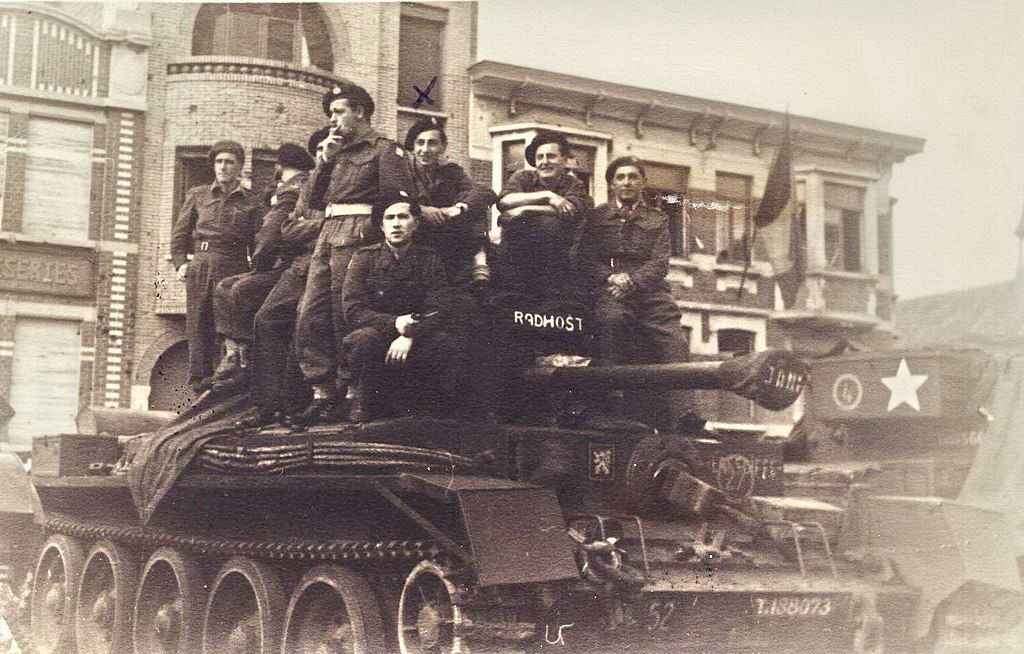
1st Czechoslovak Armoured Brigade with a Cromwell Tank
1st Brigade spent the remainder of the war at Dunkirk, alternately attacking and being attacked by the besieged German garrison, including a successful major raid on German positions on 28 October 1944, Czechoslovak Independence Day. In the spring of 1945, the 1st Armoured Brigade Group was expanded to 5,900 Czechoslovak officers and men, some of whom came from nationals recruited in liberated France and a significant group of a tank battalion, an artillery regiment, a motor transport company and a company of engineers from Czechs and Slovaks forced to serve in the Wehrmacht and who were captured by the Allies in Normandy. During the siege of Dunkirk, there was even the opportunity to go leave to Paris. In December 1944, many allied troops were withdrawn from their siege to fight the battle of the bulge. At one point there was nothing between 30,000 Germans in Dunkirk and Paris except a few thousand Czechs. They ran their tank engines day and night to make a lot of noise and gave the appearance of a far larger army.
On 23 April, a symbolic 140-men strong unit detached from the troops besieging Dunkirk, led by Major Sítek, joined with the 3rd US Army and raised the Czechoslovak flag in its homeland on 1 May 1945 at Cheb. The unit, including Peter was transferred to General Patton, with a goal of getting to Prague before the Soviet Army. The Americans did in fact reach Prague first, the problem was that at Yalta , Czechoslovakia was betrayed yet again and became part of the Russian zone of influence. Peter and the Americans withdrew to the previously agreed demarcation line and let the Soviet Army enter.
The Germans at Dunkirk garrison did not surrender until 9 May 1945, when 15,500 German troops and three U-boats were captured by the Czechoslovaks. The brigade was then free to march home, unfortunately the delay at Dunkirk cost Czechoslovakia dearly, meant that the Free Czech troops reached Prague on 18 May 1945, eight days after the arrival of Soviet-sponsored Czechoslovak troops During the siege of Dunkirk, the Czechoslovak Armoured Brigade suffered 668 casualties; 167 dead, 461 wounded, and 40 missing. The Americans finally conceded the Czech as victory parade, with the Soviets having withdrawn to a safe distance and the Czechs being forced to hand over most if their ammunition. Presumably, the Americans feared they would evict the Soviets by force.
The family went back to Zatec in October of 1945, to get their factory back and house back. They did not know what had happened to their relatives until the war ended. An uncle who was not Jewish told Peter that all his relatives were dead —grandparents, aunts and uncles, everybody. One cousin survived. The Germans left him for dead. He was in Auschwitz and Soviet troops somehow revived him. He weighed 80 pounds and survived. 35 members of Peter’s extended family were killed in those places.
Back in Prague Peter returned to school. He went to the Czech technical high school, part of the Charles University system. He was there in 1948 for the 600th Anniversary of Charles University, His father was able to work in his factory. When they arrived back in Zatec their house was occupied by the Army, but they moved out. Beneš opposed the presence of Germans in the liberated republic. The Beneš decrees (expropriated the property of citizens of German and Hungarian ethnicity of about three million Germans and Hungarians. However, Beneš's plans for expelling the Hungarian minority from Slovakia caused tensions with Hungary, whose coalition government was likewise leaning towards the Soviet Union, and ultimately objections from Moscow ended the expulsion of the Hungarians. The Soviets had no objections to the expulsions of the Sudeten Germans, and the Czechoslovak authorities continued to expel the Sudeten Germans under the Potsdam Agreement until only a negligible number of Germans remained in the Sudetenland. Zatec was a town which was emptied out. They brought in Czechs from Molina, which was a province seized by the Soviets. The Synagogue had been used as a garage by the Germans and the cemetery where my father was buried was — all the monuments had been used for construction projects. In the factory machinery was returned and then it was — because it was heavy industry, it was nationalized and confiscated. So Peter’s father essentially worked there as an employee and died in 1947 broken by the strain of it all. Peter’s father and two people who somehow died in a forced march were the first new graves in the Jewish cemetery.
While Peter was studying at Charles University, the situation in Czechoslovakia continued to deteriorate., Beneš had returned home and resumed his former position as president, being unanimously confirmed in office by the Interim National Assembly on 28 October 1945. In December 1945, the Soviet Army left Czechoslovakia. Beneš wanted to appoint, Major General Alois Liška, Peter’s former commander as Chief of the Czech General Staff, but the Soviets blocked the appointment. On 19 June 1946, Beneš was formally elected to his second term as president, presiding over a coalition government, the National Front, with Communist Party leader Klement Gottwald as prime minister. In the elections of May 1946, the Communists won 38% of the vote with the Czech National Social Party winning 18%, the People's Party 16%, the Slovak Democrats 14% and the Social Democrats 13%. Until the summer of 1947, Czechoslovakia enjoyed a brief honeymoon with democracy re-established, and the media, opposition parties, the churches, and veteran associations all existing outside of state control. There remained a significant problem with the Communist influence over the Police.
In July 1947, Beneš and Gottwald had decided to accept Marshall Plan aid, only for the Kremlin to order Gottwald to do a U-turn, with Moscow regarding Marshall Plan aid as a violation of the 1943 alliance. All this damaged the image of the Communists, and public opinion started to turn against them. In September 1947, the Communist-dominated police in Slovakia manufactured a separatist plot, this scandal in Slovakia led to demands by the other parties of the National Front that the police be depoliticized. On 12 February 1948, the non-Communist ministers threatened to resign unless the "packing" of the police by the Communists stopped. The Communists set up "action committees" and illegally arms issued to the action committees. On 20 February, the Communists formed the "people's militia" of 15,000. On 21 February 1948, 12 non-Communist ministers resigned to protest Gottwald's refusal to stop the politicizing the police. Beneš initially refused to accept their resignations and insisted that no government could be formed without the non-Communist parties. However, Gottwald had by this time dropped any pretence of working within the system. He threatened a general strike unless Beneš appointed a Communist-dominated government. The Communists also occupied the offices of the non-Communists who had resigned. Faced with the crisis, Beneš hesitated and sought more time. On 22 February, a large parade by the Communist action committees took place in Prague and ended with the people's militia attacking the offices of opposition parties Amid rumours that the Soviet Army would return to back Gottwald, Beneš gave way. On 25 February, he accepted the resignations of the non-Communist ministers and appointed a new Communist-dominated government. The non-Communist parties were still nominally represented, so the government was still technically a coalition. However, except for Masaryk, the non-Communist ministers were fellow travellers. In effect, Beneš had allowed a Communist coup and failed to rally support from a broad anti-communist coalition against them. By then poor old Beneš was a deeply ill, suffering from high blood pressure, arteriosclerosis and spinal tuberculosis, and his poor health contributed to the lack of fight in him, he was still obsessed by the threat from the Germans rather than the Soviet union Shortly afterward, elections were held in which voters were presented with a single list from the National Front, Beneš resigned as president on 7 June 1948, and Gottwald took over most presidential functions until being elected his successor a week later. It was to be a long forty years until freedom and democracy returned to Prague.
In 1948 Peter emigrated to the United States. it was November and he thought it would only be a short time before the communists put him in prison jail. His former Free Czech general had warned him to get out because the communists were going to get after them Simply for having fought with the Anglo-Americans he risked ending up in jail and being sent to work the coal mines, or worse the uranium mines. In 1948 he was making good his escape; the plane was to take off on Friday night and he didn't have my passport. Before take-off a Talmudic Bible scholar aboard and said a planeload of Jews couldn't take off on the evening of Sabbath. The authorities agreed and kept the charter airline in Prague until Saturday night, and he was able to get his passport. The plane was an unpressurized DC4, which landed in Brussels, then Shannon, Gander and New York. US immigration records show a 25-year-old Peter Glaser arriving in New York in November 1948, on a Sabena special flight which appeared to have been full of Czechs.
In America he obtained his Master of Science (1951) and of Doctor of Philosophy (1955) degrees from Columbia University. He petitioned to be naturalized as a US Citizen in July 1954. After his graduate studies Glaser spent his entire full-time professional career with Arthur D. Little, Inc. an international management consulting firm in Boston, Arthur D. Little pioneered the concept of contracted professional services. In that context, Peter was project manager for the Apollo 11 Lunar Ranging Retroreflector Array installed on the lunar surface of July 20, 1969, and two other arrays installed on subsequent missions. They remain the only science experiments still in operation on the Moon.
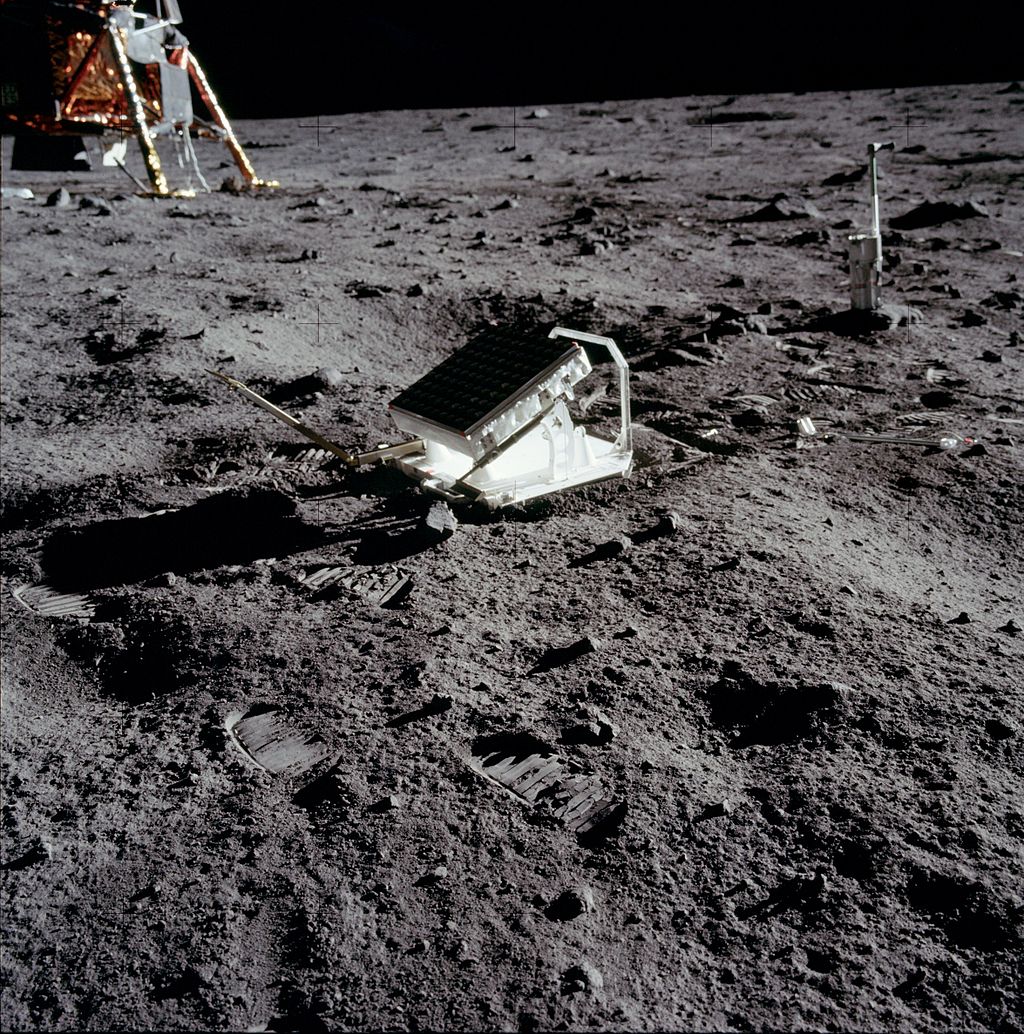
Apollo 11 Lunar Ranging Retroreflector Array
By NASA - NASA Apollo Archive http://www.hq.nasa.gov/office/pao/History/alsj/a11/AS11-40-5952.jpg, Public Domain, https://commons.wikimedia.org/w/index.php?curid=719521
Peter was responsible for the Lunar Heat Flow Probes and the Lunar Gravimeter which were operational during the Apollo program, and the Initial Blood Storage Experiment flown on the Space Shuttle Columbia) in January 1986, to explore gravitational effects on human blood cells. In 1968 he presented the concept for and in 1973 was granted the US patent on a Solar Power Satellite to supply power from space for use on the Earth. He served as consultant to the National Research Council (1960–62), a member of its board of assessment of the National Institute of Standards and Technology program (1993–96), and panel member (1994–95). He served as an advisor to NASA (1963–67) and as a member of its Advisory Council (1986), the Task Force on Space Goals, and the Lunar Energy Enterprise Case Study task force (1988–89). He served as a member of the Materials Advisory Board of the National Academy of Sciences (1958) of its Study Group on Solar Energy (1971–85). In that time, he produced around 800 scientific papers.
If yiu are interested in reading abolut Space Solar Power
Power from the Sun: Its Future | Science
Peter died on 29 May 2014 in Lexington, Middlesex County, Massachusetts. He is buried at Westview Cemetery.
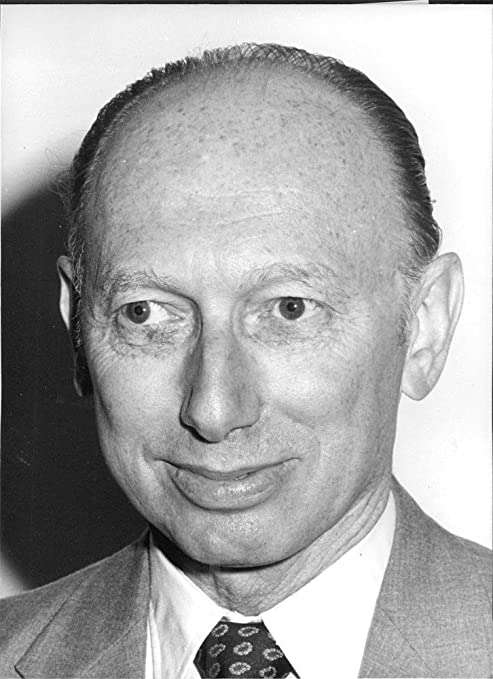
Peter Edward Glaser (September 5, 1923 – May 29, 2014)
Interview of Peter Glaser by John Elder on 1994 May 16,Niels Bohr Library & Archives, American Institute of Physics,College Park, MD USA,
www.aip.org/history-programs/niels-bohr-library/oral-histories/31509-1